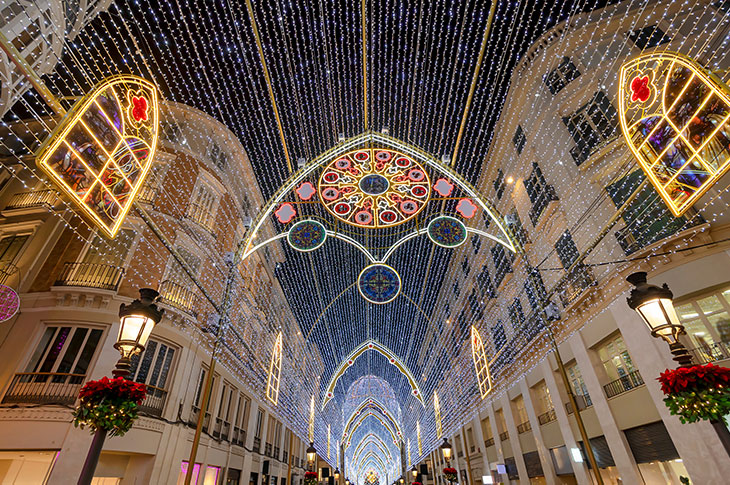Markets and lights: the Christmas plan combining tradition and spectacle in Spain
Eight suggestions to experience the magic of Christmas
Thanks to the combination of historic markets preserving local tradition and spectacular light displays, Christmas in Spain has established itself as a top-tier tourist attraction. From the iconic Plaza Mayor in Madrid to the Mediterranean atmosphere of Mallorca, the unbeatable brilliance of Vigo to the luminous creativity of Cádiz, the Christmas season offers a variety of attractions that combine culture, leisure, and shopping all around this festive celebration. Markets with an identity of their own In Madrid, the Plaza Mayor draws in thousands of visitors each year eager to soak up tradition. With over 100 stalls bursting with decorations, crafts, and nativity figures, this market has become a national benchmark combining shopping, gastronomy, and outdoor leisure in the very heart of the historic center. In Barcelona, the Santa Llúcia Fair perpetuates a custom dating back to the 18th century. Located opposite the cathedral (dedicated to Santa Cruz and Santa Eulalia), it is divided into distinct sectors for trees, handicrafts, and nativity scenes, with the addition of some unique elements of Catalan tradition, such as the caganer figurine, which attract both tourists and local families.

Further south, the market at the City of Arts and Sciences in Valencia reveals a more contemporary approach. Its stalls combine handicrafts and typical products, alongside a host of activities like storytelling, children’s workshops, and puppet shows—consolidating its reputation as a family destination. What’s more, a range of food trucks and charitable initiatives extends the experience beyond shopping. In Mallorca, the Puerto Portals Christmas Market offers an international atmosphere inspired by Central European markets. Its wooden huts decorated with garlands are complemented by a range of cultural activities, live music, and even an ice rink, creating an atmosphere that infuses the Christmas spirit with all the beauty of the Mediterranean. Cities that dazzle In recent years, Vigo has positioned itself as one of Europe’s Christmas capitals. Its 145-foot tree, over 420 illuminated streets, and a thousand decorative arches turn this Galician city into an urban spectacle attracting thousands of visitors each year to discover its intense program of events. Málaga, with the iconic image of Calle Larios, presents one of the most recognizable Christmas-light displays in the country. This light and music show is complemented by innovations such as video mapping on the cathedral or the Chinese lantern festival, in a tourist attraction that combines tradition and technology.

Torrejón de Ardoz has reinforced its identity as a Christmas destination with the title of European Capital of Christmas. Its theme park includes the Puerta Mágica (Magic Gate), an ice rink over a lake, and the biggest, life-size nativity scene in Spain, attracting more than one million visitors each season. On the other hand, Cádiz has been breaking onto the scene with a unique proposal: in 2024, this city invested the most per inhabitant into its Christmas lighting. With more than 300 luminous arches and 3D figures, this spectacle not only enhances its streets in December, but also extends through the Carnival celebrations, cementing its role as a premier festive destination.

